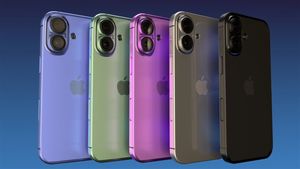The environmental footprint of our solutions is a key consideration in our approach to product stewardship. Find out how we’re striving to conserve resources and to prevent pollution in everything we create.
SOURCE: Eaton
DESCRIPTION:
By Heinz Huesmann and Anne Lillywhite
At Eaton, the environment is at the heart of what we do: what's good for the planet and for people is also good for us and our stakeholders. Our sense of a broader responsibility to society has led us to strive towards ambitious goals for 2030 that include halving the carbon emissions from our operations. We’ve also committed to a $3 billion R&D investment into more sustainable and energy efficient solutions.
When it comes to our products, this mindset is also driving us to take the lead in the global energy transition. From supporting the rise of electric vehicles, to enabling buildings that maximize use of renewables, or enhancing digital intelligence for more efficient power grids, our solutions are moving the needle on both air pollution and greenhouse gas emissions. We’re helping our customers lower their costs and their carbon footprint.
As discussed in our blog on product stewardship, to ensure every product improves on its predecessor, we ask our global network of six innovation centers and more than 10,000 engineers to complete a Positive Impact Framework assessment during the design phase. This allows them to re-examine products from a different perspective, evaluating six key dimensions of sustainability through a new set of eyes. We will address these six dimensions in articles over the next twelve months, starting with the environmental footprint of our products.
We define the environmental footprint of our products as the amount of natural resources they consume, as well as the emissions they produce. The fewer resources used and the less emissions generated during a product’s lifecycle, the smaller its footprint. We consider resources like materials, water and power, as well as emissions like greenhouse gases, wastewater and soil contaminants, that are consumed or created during each product’s manufacturing, operation, or end-of-life.
"From supporting the rise of electric vehicles, to enabling buildings that maximize use of renewables, or enhancing digital intelligence for more efficient power grids, our systems are helping our customers lower their costs and their carbon footprint."
Cyrille Brisson, vice president, Sales and Marketing, Electrical Sector, EMEA
Tracking environmental footprints
Through our Product Stewardship Center of Excellence, we recommend engineers initially ask a series of six questions to assess a product’s environmental footprint. As part of a Positive Impact Framework assessment, this enables engineers to consider the advantages of new product designs from multiple different perspectives.
- Does the product have more recycled or renewable content than its predecessor?
Adopting renewable and recycled materials can help drive progress towards a more circular economy. Using recycled materials helps avoid the adverse impacts of waste and decreases the burden on the planet by not depleting non-renewable natural resources. This question might also include ancillary factors like recycled product packaging.
- Is the product made of less material?
Light-weight products require fewer resources to produce and also create less waste at the end of their life. However, a product’s weight can also make a huge difference to its operational environmental footprint. In transportation weight directly correlates to energy consumption—for instance, a lighter-weight aircraft will be more fuel efficient. However, these benefits also need to be balanced against the specific impact of using lighter but rarer materials like aluminum or titanium.
- Is the product made with higher manufacturing efficiency?
While our engineers don’t have direct control over the manufacturing process, design decisions can make an impact. The use of generic components can simplify manufacturing, while factors like the ease of disassembly, re-use, or refurbishment can also make the process more efficient. New methods like additive manufacturing can also minimize waste during production and we’re actively investing in cutting-edge techniques that improve the efficiency, durability and recyclability of products. Products can be designed with alternative materials or processes in mind, such as eliminating the need for heat treatment, to help reduce our manufacturing carbon footprint as we strive for our ambitious 2030 sustainability targets.
- Does the product have a reduced carbon footprint?
As one of the most important global megatrends, we take the impact of our products on climate change extremely seriously. We’ve joined the global movement to limit the increase of the world’s temperature to 1.5°C and we empower all our engineers with lifecycle assessment tools to quantify a product’s carbon footprint. We support detailed studies that can also examine impacts like acidification, eutrophication, ozone depletion, particulate emission, and more.
Product light-weighting is again a major consideration here, as it can reduce fuel consumption and emissions in end applications. Equally, a product’s operational energy efficiency is a major factor in its carbon footprint—with LED vs fluorescent bulbs being one obvious example. Distribution logistics can also come into play, with products shipped by air creating more carbon emissions than those sent by other means, such as rail.
- Is the product explicitly designed to be easier to assemble, disassemble, repair, refurbish, or recycle?
Here, engineers look at product circularity, driving progress towards a circular economy aimed at eliminating waste and making the best use of natural resources. We only consider factors that go above and beyond compliance with international regulations. When a product consumes less resources and produces less waste, it’s more able to retain value for longer and drive a closed-loop of recyclability. Modular or upgradable products that enable a longer operational lifetime can also move the needle on this area.
- Is the product covered by a take-back, recycling, or repair program?
While this is more of a concern for after-sales teams than our engineers, we still consider how far beyond regulatory requirements we will go in our take-back, recycling, or repair programs. Our first-of-its-kind capacitor recycling program is a great example, which includes onsite material pickup and supports any unit, regardless of age, original manufacturer, or condition.
Positive Impact Framework
To ensure every product improves on its predecessor, we ask our engineers to complete a Positive Impact Framework assessment during the design phase. This allows them to re-examine products from a different perspective, evaluating six key dimensions of sustainability through a new set of eyes.
Developing products that make a difference
To bring these environmental footprint considerations to life, let’s look at a couple of specific products designed with these factors in mind.
Our MTL SUM5 Smart Universal Marshalling device is intended for use in hazardous industrial areas where there’s the possibility of an explosive atmosphere. Key to this solution’s smaller environmental footprint is its ability to combine five marshalling functions in one high-density, modular design. This means customers can replace multiple conventional cabinets and racks with a smaller package that takes not only fewer materials to manufacture, but also less energy to operate.
Additionally, the ‘plug and play’ design of the MTL SUM5 eliminates the need for intricate wiring to connect components. This reduces the materials required for its construction, as well as generating the knock-on benefits of easier installation and maintenance across its lifetime. The MTL SUM5 is also designed to be auto assembled, which lowers the manufacturing footprint of the product still further.
Our second example also comes from the industrial world: the X10 industrial sounder, and sounder beacon range. These are tough and durable signaling solutions ideal for new, standalone, or retrofit installations.
To reduce the environmental footprint of the X10, engineers altered the composition of its housing material—replacing the old polymer that contained halogenated flame retardants with a new one that does not. The new polymer also has the benefit of being highly UV-resistant, reducing color fading and extending the perceived lifetime of the product.
Aside from eliminating substances of concern like halogenated flame retardants and antimony oxides from the new product, we also extended the X10’s lifetime and now offer a 10-year rather than three-year warranty. These design choices considerably enhanced the circular economy for this product—addressing key elements like durability, recyclability, and modular design.
Greater durability means fewer resources are needed to replace or repair the X10, while the ability to retrofit existing solutions with it also improves the operational lifetime of entire industrial sounder assemblies. Removing elements of concern also enables easier recycling.
These are just two examples of how our engineers are actively embracing guidance from our Positive Impact Framework to design more sustainable solutions that deliver greater benefits for customers and the environment.
"By making our products safer, more efficient, and more reliable, we can drive growth while also helping to make a healthier planet work."
Nigel Crawford, vice president and general counsel, EMEA
KEYWORDS: NYSE: ETN, Eaton Corporation, Positive Impact Framework
![]()





















